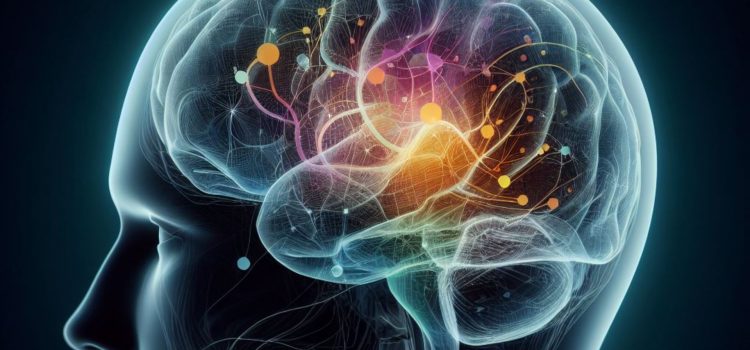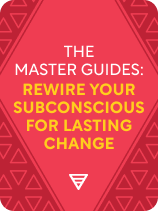

This article is an excerpt from the Shortform book guide to "The Master Guides: Rewire Your Subconscious for Lasting Change" by Shortform. Shortform has the world's best summaries and analyses of books you should be reading.
Like this article? Sign up for a free trial here.
What does the subconscious mind do? How does it free up mental energy and keep you safe?
The subconscious mind is always at work, whether you realize it or not. In our guide to rewiring your subconscious, we explain how the subconscious mind forms automatic routines, influences your thoughts and decisions, and keeps you mentally and physically safe.
Continue reading to learn what the subconscious mind does.
#1: The Subconscious Mind Forms Automatic Routines
What does the subconscious mind do? One of its tasks is to form automatic routines. Charles Duhigg (The Power of Habit) clarifies why habits form and evolve into automatic behaviors: Every time you learn or do something new, you have to apply conscious effort to do it right. This process takes up a lot of mental energy and restricts your ability to think about other things.
He explains that your brain is designed to save mental energy on the things you do most often to avoid information overload and function efficiently. It does this by learning the sequence of actions it takes to achieve something. It then converts this sequence into an automatic routine and stores it so that you can perform your daily tasks automatically (without conscious thought). The more often you practice doing certain things, the easier it becomes for you to do them without thinking.
For example, each time you brush your teeth, you automatically pick up your toothbrush with one hand and apply toothpaste with the other. This is because your brain paid attention to your actions and created an automatic routine for brushing your teeth. Without this routine, you would have to think carefully about how to brush your teeth every single time.
Where Does Your Brain Store Automatic Routines?
According to Joseph Murphy (The Power of Your Subconscious Mind), your mind is made up of two parts: the conscious mind and the subconscious mind.
1) Your conscious mind is your active mind. It contains all of the thoughts and feelings that you’re aware of at any given moment. You use it to judge your environment and to make choices and decisions based on these judgments.
2) Your subconscious mind is your passive mind. It’s a reservoir of thoughts, feelings, and memories that lies beneath your conscious awareness. It regulates all of your bodily functions, and it records and stores your every experience even when you’re not consciously paying attention—over 90% of your brain’s activity takes place in your subconscious mind. Murphy explains that your subconscious mind is responsible for creating and storing all your automatic routines.
#2: The Subconscious Mind Influences Your Thoughts & Decisions
Now that we’ve clarified why your subconscious mind creates automatic routines to dictate your behaviors, let’s explore how it also influences your thoughts and decisions.
Holistic psychologist Nicole LePera (How to Do the Work) says that, in addition to creating automatic routines for what you do, your subconscious mind creates automatic routines for what you think—how you perceive and interpret all of your experiences. It creates these routines based on what you think and feel most often.
According to Murphy, your subconscious mind creates these routines impersonally—it doesn’t judge what you habitually think or feel. However, though your subconscious mind doesn’t judge your habitual thoughts and feelings, it does create associations between them. These associations enable your subconscious mind to quickly identify and classify everything it perceives in your environment.
For example, if you habitually think crowds are overwhelming and feel anxious about them, your subconscious mind classifies every crowd it perceives as stress-inducing.
Maxwell Maltz (Psycho-Cybernetics) adds that, once it’s created an association, your subconscious mind influences you to automatically think and behave in ways that reflect and reinforce that association. It does this by creating feedback loops: It triggers your emotions, which colors your perceptions and interpretations of your environment, which leads you to react in specific ways to stimuli.
The feedback loop continually reinforces the association: Your subconscious mind’s interpretation of your environment justifies your habitual thoughts, feelings, and behaviors—and your habitual thoughts, feelings, and behaviors reinforce the way your subconscious mind perceives your environment.
For example, whenever you encounter a crowd, your subconscious mind influences you to react in ways that reinforce your anxiety—such as by inducing panic or urging you to retreat to a quieter space. And, because you always feel panicked in crowds, your subconscious mind perceives them as threats.
#3: The Subconscious Mind Keeps You Safe
We’ve just covered how your subconscious mind creates automatic routines to save mental energy and then reinforces those routines. Now, let’s explore why it’s so “stuck” in these routines: Because they keep you safe from harm.
LePera argues that your subconscious mind’s primary role is to keep you mentally and physically safe. It achieves this by scanning the environment for potential threats. How does your subconscious mind know if something is a “threat”? As we touched on earlier, your subconscious mind creates associations between your habitual thoughts, feelings, and behaviors. During this process, it categorizes the emotions you feel so that it can predict what types of situations might pose a threat.
- If you felt positive emotions during an experience, your subconscious mind categorized that type of experience as safe.
- If you felt negative emotions during an experience, your subconscious mind categorized that type of experience as a threat.
According to LePera, your subconscious mind now uses its categorizations to quickly interpret an environment as safe or threatening and guide you toward safety if necessary. For example, you were bitten by a dog when you were a child. The experience terrified you. By default, your subconscious mind now interprets dogs in your environment as possible threats and influences you to feel fear and physically move away from them.
Self-help guru Tony Robbins (Awaken the Giant Within) offers a slightly different take on how your subconscious mind categorizes experiences: It classifies emotions as either pleasurable or painful and uses these categories to make decisions that guide your behavior toward pleasure and away from pain.

———End of Preview———
Like what you just read? Read the rest of the world's best book summary and analysis of Shortform's "The Master Guides: Rewire Your Subconscious for Lasting Change" at Shortform.
Here's what you'll find in our full The Master Guides: Rewire Your Subconscious for Lasting Change summary:
- Why the only way to change a bad habit is to rewire your subconscious
- Methods from experts such as Tony Robbins, Charles Duhigg, and Nicole LePera
- Why it's so important to take time for physical relaxation






